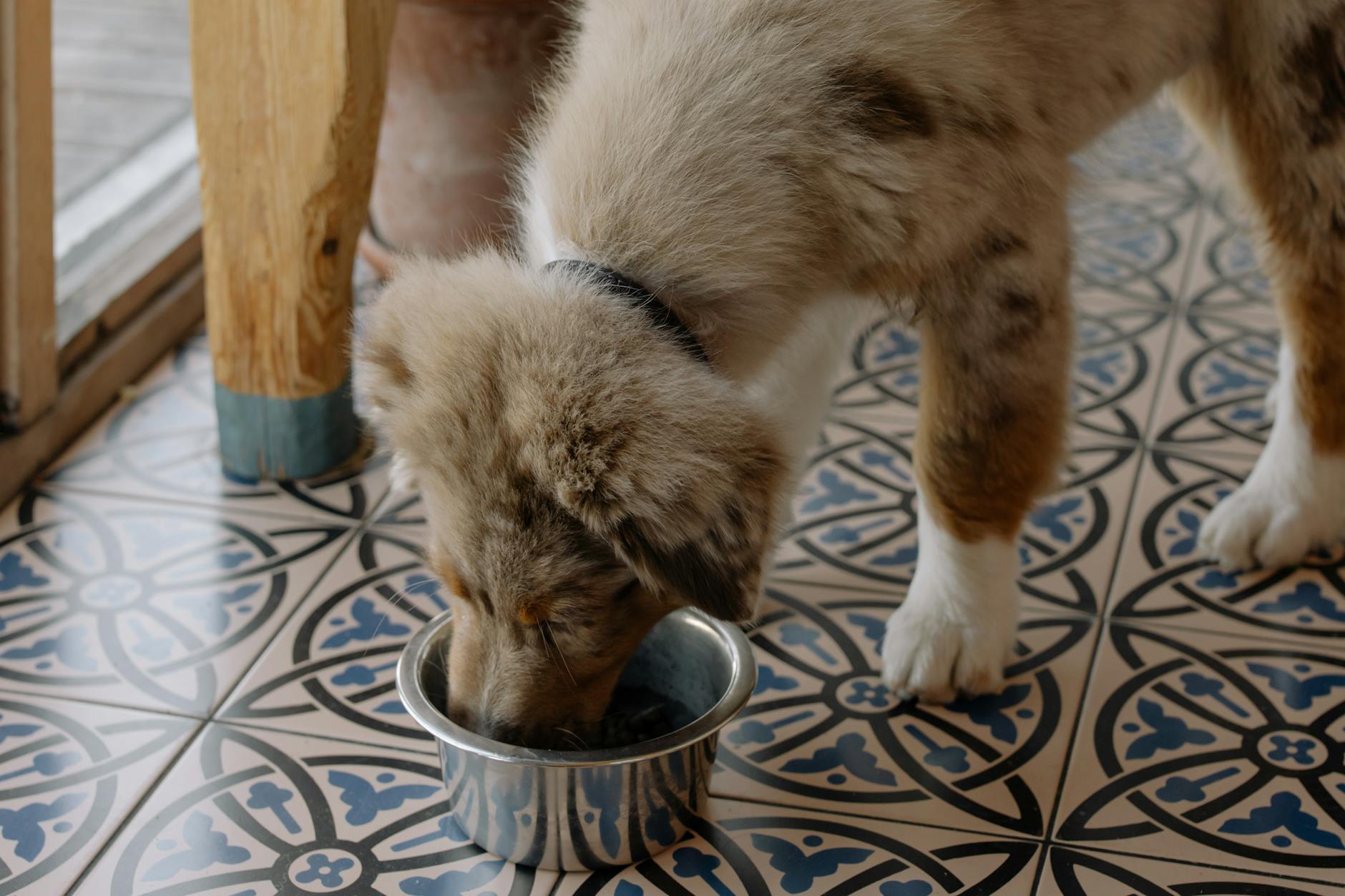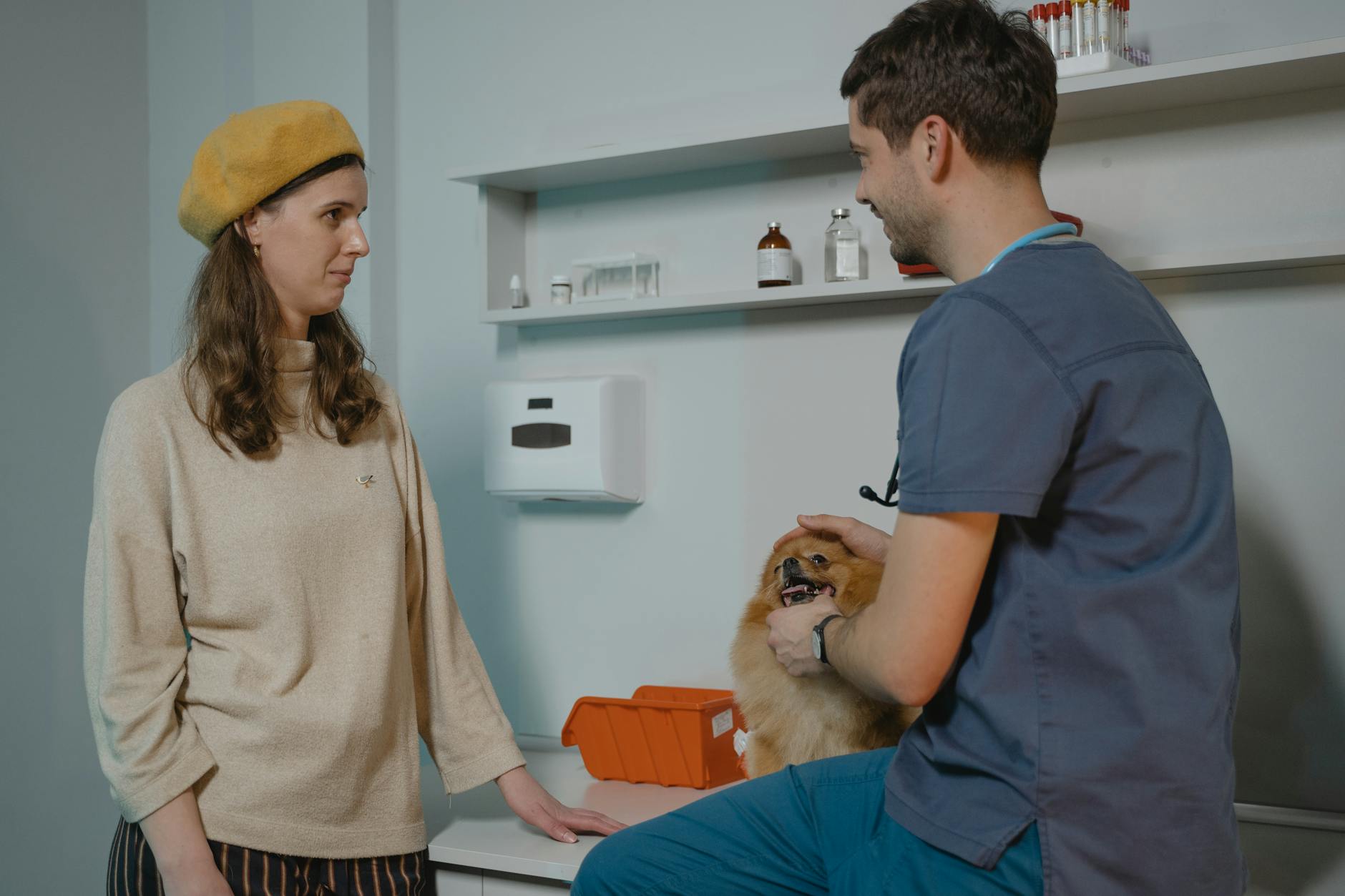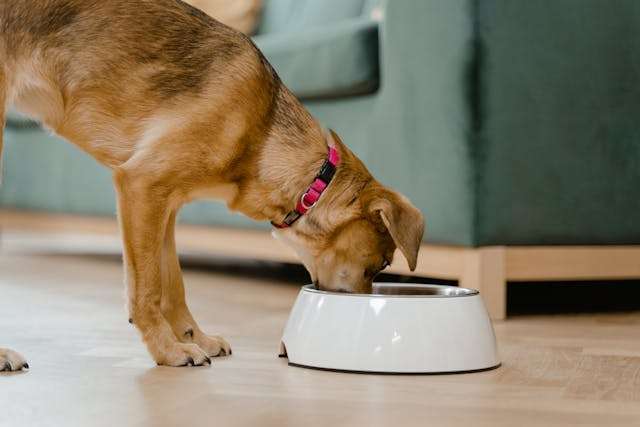Tips for Feeding Picky Eaters Without Sacrificing Nutrition

Tips for Feeding Picky Eaters Without Sacrificing Nutrition. Getting your picky eater to enjoy mealtime can feel like a constant battle. Seeing untouched food in their bowl is frustrating, but sacrificing nutrition isn’t an option. The good news? There are simple solutions to ensure your dog gets the nutrients they need without the stress.
From smart food choices to creative feeding strategies, there’s always a way to keep your furry friend healthy and happy. If you’re wondering about the best food options for finicky pups, check out this guide on Purina Pro Plan Dog Food for Seniors for inspiration.
Table of Contents
Understanding Picky Eating in Dogs
Picky eating in dogs is more common than you might think. It isn’t just about preferences; there are underlying causes and tell-tale signs to consider. Let’s dig into why your furry friend might be turning their nose up at meals and how you can recognize the behaviors of a finicky eater.
Common Causes of Picky Eating
Picky eating often stems from different factors—sometimes behavioral, sometimes health-related. Here’s a closer look at the most common causes:
Health Issues: Just like humans, dogs may lose their appetite due to illnesses. Dental problems, allergies, or even gastrointestinal discomfort can make eating painful. If picky eating accompanies symptoms like vomiting or diarrhea, consult your vet immediately. Learn more about potential health causes from the American Kennel Club’s guide.
- Past Experiences: Many dogs associate feeding times with stress if they’ve had bad experiences
. Changes in their environment, like a new home or loud mealtime commotions, can also trigger anxiety around eating.
- Taste Preferences: Dogs develop preferences based on texture, flavor, and aroma. Some dogs
grow accustomed to certain foods and resist change. Overfeeding treats can also cause them to reject their regular food.
Feeding Habits: If food is left out all day, dogs may become disinterested since it’s always available. Sometimes, introducing too much variety can confuse their palate. See more insights about feeding behaviors from this resource.
Picking up on the cause can make finding a solution more manageable and less frustrating.
Signs of Picky Eaters
Is your dog a picky eater, or is something else happening? Identifying explicit behaviors helps you tailor a solution. Here’s how to recognize the signs:
- Frequent Food Refusal: Skipping meals, sniffing the bowl, and walking away is a tell-tale sign.
- Selective Eating: Consistently eating only specific parts of the meal, like picking out a single ingredient.
- Prolonged Mealtime: Taking too long to finish or leaving food untouched for hours.
- Weight Fluctuations: Noticeable weight loss due to inadequate nutrient intake. Learn how to address this issue with the best dog food options by visiting Best Dog Food For Picky Eaters.
Observing these signs lets you provide your pup with a better feeding plan tailored to their needs.

Photo by Vlada Karpovich
Picky eating can seem small, but addressing it requires attention to detail. Understanding what’s causing the aversion and picking up on subtle behaviors makes you one step closer to stress-free mealtimes.
Nutritional Needs of Dogs
Providing your dog with a well-rounded diet is essential for their health, energy, and vitality. Every bite they take contributes to growing muscles, a shiny coat, and lifelong wellness. Nutrition isn’t just about filling their stomach; it’s about fueling their body in the best way possible. Here’s a breakdown of the key components every pup needs.
Macronutrients: Proteins, Carbohydrates, and Fats
Dogs rely on macronutrients to support their growth, movement, and overall health. Let’s look at how each plays a role:
- Proteins: The building blocks of your dog’s body. Proteins are crucial for maintaining muscles, repairing tissues, and supporting a strong immune system. Dogs thrive on protein-rich diets, with sources like chicken, beef, and fish providing essential amino acids. Curious about quality protein options? Visit Nutrition Tips | Dog Nutrition Guides for insights into balanced and protein-packed diets.
- Carbohydrates: Often overlooked, carbs are a great source of quick energy. Whole grains, sweet potatoes, and oats help keep your dog’s energy levels consistent throughout the day. While not essential, they can improve digestion and provide valuable nutrients.
- Fats: These powerhouse nutrients keep your dog’s coat glossy and skin healthy. Fats are also energy-dense, offering twice the calories per gram than proteins or carbs. Omega-3 and omega-6 fatty acids are particularly beneficial for overall well-being. Learn more about essential nutrients from PetMD’s Guide to Dog Food Nutrients.
Balancing these macronutrients ensures your pup stays active, alert, and happy.
Vitamins and Minerals
Vitamins and minerals might work in smaller amounts, but their impact is monumental. Here’s what you need to know:
- Vitamins: Dogs need fat-soluble (A, D, E, and K) and water-soluble (B-complex and C) vitamins. Each one serves a unique purpose. For instance, Vitamin A promotes eye health, while Vitamin D strengthens bones by aiding calcium absorption.
- Minerals: Essential minerals like calcium, phosphorus, and potassium are pivotal for muscle function, bone development, and nervous system health. Trace minerals like zinc and iron help maintain a healthy coat and bolster red blood cell function.
A diet lacking these nutrients can lead to serious health issues like brittle bones or a dull coat. Check out Nutrition – General Feeding Guidelines for Dogs to understand feeding guidelines.

Photo by Mia X
By focusing on these key nutrients, you’ll meet your dog’s dietary needs and set the stage for a long and healthy life.
Tips for Encouraging Better Eating Habits
Feeding a picky eater doesn’t have to be frustrating if you approach it patiently and strategically. A balanced routine, meal variety, and homemade options can transform even the most finicky eater into a happy, healthy diner. Let’s explore practical tips for encouraging better eating habits for your dog.
Create a Routine: Discuss the importance of feeding schedules.
Did you know that dogs thrive on routine? A regular feeding schedule keeps their digestive system on track and establishes consistent expectations around mealtime. Start by:
- Feeding at the exact times daily.
- Avoid leaving food out for extended periods to build a sense of urgency.
- Limiting distractions like television or loud noises that might stress your pup during meals.
For further guidance on picky eaters, check out Dog Nutrition Tips for more insights on maintaining a feeding schedule effectively.
Mixing Up Food Types: Suggest rotating different food types to maintain interest.
Variety is key when it comes to keeping your dog interested in mealtime. Like us, dogs can get bored with the same meals daily. Try rotating:
- Proteins: Incorporate chicken, beef, turkey, or fish.
- Textures: Alternate between wet food, dry kibble, and freshly cooked meals.
- Food toppers: Adding a quality topper can make meals irresistible. Need ideas? Discover the best options in Best Dog Food Toppers For Picky Eaters 2024.
These small changes can make a big difference in keeping your dog engaged at mealtime.

Photo by cottonbro studio
Homemade Dog Food Options: Provide ideas for nutritious homemade meals.
If commercial dog food isn’t cutting it, consider going homemade. Cooking for your dog allows you to tailor meals to their needs and preferences while ensuring they get quality nutrients. Here are some simple ideas:
- Lean Proteins: Boiled or baked chicken and turkey.
- Healthy Carbs: Cooked brown rice or quinoa for sustained energy.
- Vegetables: Include finely chopped carrots, spinach, or green beans for added fiber.
Homemade diets offer flexibility, but make sure they’re balanced. Learn more by visiting Homemade Dog Food Guide to ensure your recipes meet your dog’s nutritional needs.
Incorporating Treats Wisely: Explain how to use treats to make meals more appealing.
Treats can be a double-edged sword. While they’re great motivators, over-reliance can spoil a dog’s appetite for regular meals. Here’s how to use treats effectively:
- Mix tiny amounts of a favorite treat with meal portions.
- Use treats sparingly to avoid creating a habit of refusal.
- Experiment with flavors like freeze-dried liver or peanut butter for enhanced excitement.
Keep treats occasional yet enticing to maintain a balanced diet without overindulgence.
Using High-Quality Ingredients: Suggest brands or types of food that are nutritious and appealing.
High-quality ingredients matter more than you might think. Dogs appreciate the taste and aroma of fresh, wholesome food. Opt for recognizable ingredient lists with quality proteins and minimal fillers. Some trusted options include:
- Brands with Whole Ingredients: Look for brands highlighting whole meats and vegetables.
- Limited Ingredient Foods: Ideal for dogs with allergies or sensitivities.
Check out Best Dog Food For Picky Eaters for detailed recommendations on premium food options.
Focusing on nutritious ingredients and a thoughtful approach can encourage better eating habits and ensure your dog enjoys every bite.
When to Consult a Veterinarian
If your dog has been consistently picky about their meals, it might be more than just a preference for a particular flavor or texture. Several health risks can arise from poor nutrition caused by picky eating, and knowing when to consult a veterinarian is crucial for maintaining your dog’s health. Let’s explore the potential issues and how your vet can help address them.
Health Issues Related to Picky Eating
Picky eating patterns can have dangerous consequences if left unchecked. Prolonged refusal to eat or favoring only low-nutrient options often leads to deficiencies that affect your dog’s overall wellness. Here are some common health risks tied to poor nutrition:
- Weight Loss or Malnutrition: Consistently skipping meals or rejecting balanced dog food can result in dangerous weight loss. This weakens your dog’s immune system and leaves them susceptible to illnesses.
- Dental Issues: Dogs avoiding harder kibble may develop tartar buildup and gum disease, which can complicate their health.
- Gastrointestinal Problems: Picky eaters might favor less healthy or unbalanced meals that disrupt their gut health and lead to issues like diarrhea or constipation.
- Weak Muscles and Brittle Bones: A diet deficient in essential nutrients like calcium and protein can lead to skeletal and muscular problems, making physical activity challenging for your dog.
If you’re observing these signs, timely intervention is key. For more guidance on health risks and testing, check out this article on Best Protein Alternatives for Dogs with Meat Allergies in 2025.
Veterinary Recommendations
Discussing your dog’s eating habits with a vet isn’t just helpful—it’s often necessary. Veterinarians can provide tailored advice based on your pet’s age, breed, activity level, and health conditions. Wondering what to expect when consulting your vet? Here’s how they can help:
- Dietary Adjustments: Vets offer personalized recommendations for foods that suit your dog’s palate while meeting their nutritional needs.
- Testing for Allergies or Illnesses: If nutritional issues are suspected, they may conduct allergy tests or blood work to identify hidden causes.
- Supplement Suggestions: Based on deficiencies, vets might suggest vitamins or supplements to boost your dog’s health.
Don’t wait too long to act on the symptoms that concern you. Learn more about signs to take your pup for professional advice on 10 Warning Signs You Should Take Your Dog to the Vet.

Photo by Tima Miroshnichenko
Ignoring the need for a veterinary consultation can unknowingly place your dog in harm’s way. If you’re considering adjustments to your pup’s diet, a vet’s input ensures both taste and nutrition are prioritized. For more advice, explore Best Dry Dog Food 2024 – Dog Nutrition Guides to find options that align with professional recommendations.
Frequently Asked Questions (FAQ)
It’s normal to have many questions when navigating the challenges of feeding a picky eater while ensuring proper nutrition. Below are answers to some common queries dog owners often have. Whether weighing food options or tackling behavioral challenges, these responses provide helpful clarity.
Why Is My Dog a Picky Eater?
Dogs can be fussy for various reasons. It could be due to health-related issues, taste preferences, or learned behaviors. Sometimes, dogs lose interest in food if they are overfed on treats or if they’ve associated mealtime with stress. If your dog’s picky eating persists, it could be time for a check-up. Learn more about behavioral traits tied to fussy eaters by visiting Nutrition FAQs | Cummings School of Veterinary Medicine.
Can I Change My Dog’s Food Too Often?
While variety can spice mealtimes, frequent changes might upset your dog’s stomach. Always introduce new foods gradually over a week to prevent digestive issues. Stick to nutrient-rich options that align with their diet plan for long-term health benefits. Need guidance? Find tips in this general feeding guide.
What Should I Look for in High-Quality Dog Food?
High-quality dog food has real meat as the main ingredient, minimal fillers, and essential nutrients like Omega-3s. Steer clear of artificial preservatives and aim for whole-food ingredients. For more on what nutrients matter, explore this balanced dog food guide.

Photo by MART PRODUCTION
How Can I Encourage My Dog to Eat Dry Kibble?
Dry kibble can sometimes feel boring to dogs. Here are a few tips to make it more appealing:
- Add low-sodium chicken broth for some flavor.
- Mix in a bit of wet food or plain yogurt.
- Use food toppers for extra texture and aroma.
If none of these work, explore more ideas for picky eaters in this helpful Best Dog Food Toppers For Picky Eaters 2024 resource.
Should I Be Concerned About Nutritional Deficiencies?
Yes, prolonged picky eating can lead to deficiencies like lower immunity or weaker bones and muscles. Ensure every meal provides adequate proteins, vitamins, and minerals to avoid long-term health effects. For more insights, check out Dog Nutrition Tips.
When Should I Consult a Vet?
If your dog has stopped eating for over a day or displays symptoms like weight loss, vomiting, or diarrhea, consult your vet immediately. Persistent picky eating could signal a deeper health issue. Find excellent vet-backed feeding suggestions by visiting Dog Nutrition – Your Questions About….
This FAQ section offers a glance at common concerns, but each dog is unique. Constantly monitor your pet’s eating habits closely and address any concerns promptly with professional advice.
Conclusion: Key Takeaways for Feeding Your Picky Eater
Ensuring your picky eater gets the nutrition they need doesn’t have to be a constant tug-of-war. By incorporating a thoughtful approach, you can balance nourishment and enjoyment for your dog.
Focus on Consistent Habits
Establishing a straightforward feeding routine is one of the most effective ways to prevent picky eating. Offer meals simultaneously each day and remove uneaten food within 20 minutes. Over time, your dog will learn to associate set times with mealtime.
Incorporate Variety Smartly
Keep things interesting by occasionally rotating proteins, textures, and food toppers without overloading their system. For instance, adding fish or lamb to a chicken-based diet can re-spark interest. To learn more about tailoring your dog’s nutrition, check out Best Grain-Free Dog Food Choices for Akitas With Allergies.
Homemade Options for Picky Eaters
Sometimes, the way to your dog’s appetite is through the kitchen. Nutritious homemade meals like boiled chicken with vegetables can work wonders. Just consult with your vet to ensure they meet nutritional standards.

Photo by Pavel Danilyuk
By focusing on these strategies, you’ll be well on your way to creating stress-free mealtime experiences that keep your furry companion both healthy and happy. Explore Hill’s Science Diet Puppy: Your Guide To Optimal Nutrition for additional reading on top food options.







2 Comments